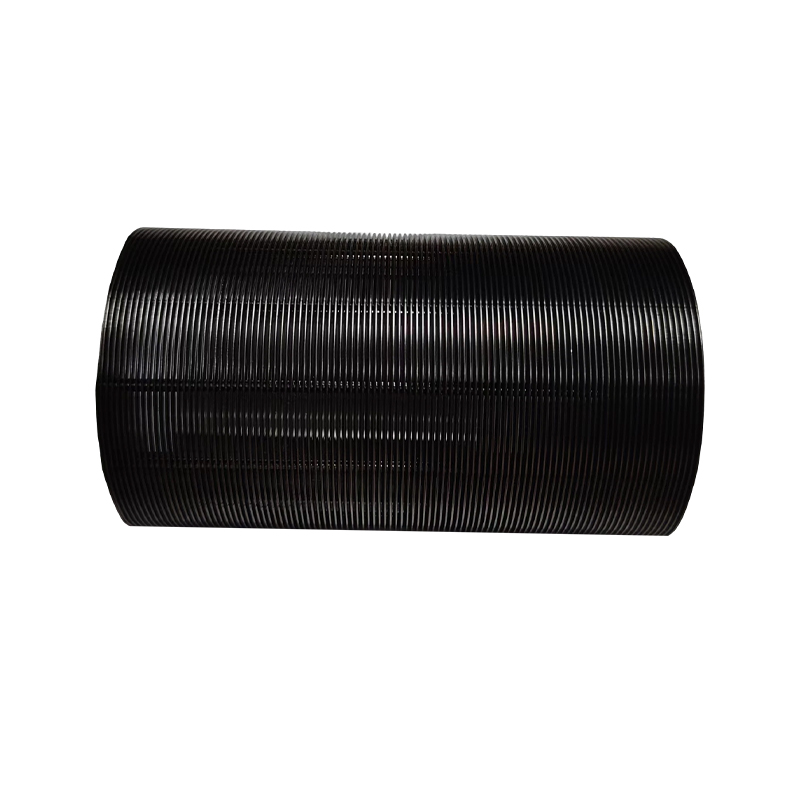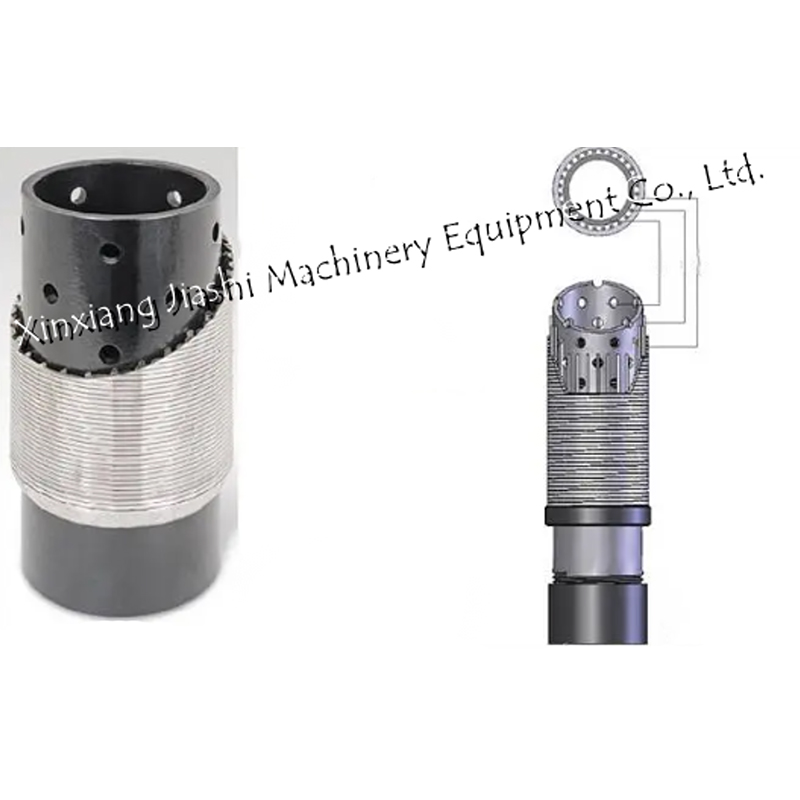Why can oil casing effectively prevent blockage?
Release Time : 2025-06-25
In many engineering fields such as oil and gas extraction, groundwater development, and sewage treatment, the choice of filter media is directly related to the equipment operation efficiency and system stability. Among them, oil casing is gradually becoming the preferred filter device in many key scenarios due to its unique structural design and excellent anti-blocking performance.
1. V-shaped cross-section design: fundamentally reduce blockage points
Traditional screens often use circular or rectangular pore structures. Although the manufacturing process is mature, it is easy to cause particle blockage in actual applications. The oil casing adopts a V-shaped cross-section contour design, and each intersection is accurately calculated and arranged to avoid the dead corners and sand stuck areas common in traditional screens.
This design allows the fluid to flow smoothly when passing through the screen, reducing the possibility of particle retention, thereby significantly reducing the risk of blockage. This advantage is particularly obvious in environments with high sand content.
2. Continuous gap structure: larger opening area leads to lower flow rate
Another core advantage of oil casing is its continuous gap structure. Compared with traditional point-shaped or hole-shaped screens, it has a larger and evenly distributed opening area, which means that the water flow rate through the screen per unit time is relatively low.
When the water flow rate decreases, the ability to carry solid particles such as sand and gravel is also weakened, and the particles are more likely to be intercepted and discharged with the direction of the water flow, rather than embedded in the gaps of the screen to cause blockage. At the same time, this structure also improves the overall permeability of the screen, making the filtration efficiency higher and the system operation more stable.
3. Longitudinal support rods: enhance mechanical strength and improve pressure resistance
In addition to the surface structure, oil casing is also equipped with high-strength longitudinal support rods, which not only play the role of fixing the shape of the screen, but also provide additional mechanical support under high-pressure conditions.
In application scenarios such as oil casing and deep well pumps, the formation pressure is huge, and ordinary screens are prone to deformation or even collapse during long-term use, resulting in filtration failure. With its sturdy support structure, oil casing can still maintain good shape and function under high-pressure conditions to ensure that the filtration effect is not affected.
4. Strong shrinkage and adaptability to complex working conditions
The gap of oil casing is not rigid and unchanged, but has a certain elastic shrinkage ability. When encountering larger particles or instantaneous high-pressure impact, the screen can be slightly expanded or compressed without damage, so that the particles can pass smoothly and avoid overall failure caused by local blockage.
This good shrinkage and resilience make it show stronger adaptability and service life when facing working conditions with high sand and gravel content, complex water quality or frequent pressure fluctuations.
5. Prevent sand and gravel from entering the screen to achieve efficient filtration
In many filtration systems, the real danger is not the accumulation of particles on the surface, but the small particles that penetrate deep into the screen. Once they are embedded in the gap, it is extremely difficult to clean them, and eventually the screen will fail completely.
Due to its special V-shaped structure and continuous gap design, oil casing can effectively prevent sand and gravel from entering the screen under high pressure. Most particles will be intercepted on the surface of the screen and naturally washed away with the water flow, thereby achieving long-term and stable filtration effect.
The reason why oil casing can stand out among many filtration devices is that it has considered the root cause of the blockage problem from the beginning of its design. Whether it is the anti-blocking structure of the V-shaped cross-section, the low-speed flow of the continuous gap, or the mechanical strength brought by the longitudinal support, every design detail serves the purpose of "unobstructed flow".
1. V-shaped cross-section design: fundamentally reduce blockage points
Traditional screens often use circular or rectangular pore structures. Although the manufacturing process is mature, it is easy to cause particle blockage in actual applications. The oil casing adopts a V-shaped cross-section contour design, and each intersection is accurately calculated and arranged to avoid the dead corners and sand stuck areas common in traditional screens.
This design allows the fluid to flow smoothly when passing through the screen, reducing the possibility of particle retention, thereby significantly reducing the risk of blockage. This advantage is particularly obvious in environments with high sand content.
2. Continuous gap structure: larger opening area leads to lower flow rate
Another core advantage of oil casing is its continuous gap structure. Compared with traditional point-shaped or hole-shaped screens, it has a larger and evenly distributed opening area, which means that the water flow rate through the screen per unit time is relatively low.
When the water flow rate decreases, the ability to carry solid particles such as sand and gravel is also weakened, and the particles are more likely to be intercepted and discharged with the direction of the water flow, rather than embedded in the gaps of the screen to cause blockage. At the same time, this structure also improves the overall permeability of the screen, making the filtration efficiency higher and the system operation more stable.
3. Longitudinal support rods: enhance mechanical strength and improve pressure resistance
In addition to the surface structure, oil casing is also equipped with high-strength longitudinal support rods, which not only play the role of fixing the shape of the screen, but also provide additional mechanical support under high-pressure conditions.
In application scenarios such as oil casing and deep well pumps, the formation pressure is huge, and ordinary screens are prone to deformation or even collapse during long-term use, resulting in filtration failure. With its sturdy support structure, oil casing can still maintain good shape and function under high-pressure conditions to ensure that the filtration effect is not affected.
4. Strong shrinkage and adaptability to complex working conditions
The gap of oil casing is not rigid and unchanged, but has a certain elastic shrinkage ability. When encountering larger particles or instantaneous high-pressure impact, the screen can be slightly expanded or compressed without damage, so that the particles can pass smoothly and avoid overall failure caused by local blockage.
This good shrinkage and resilience make it show stronger adaptability and service life when facing working conditions with high sand and gravel content, complex water quality or frequent pressure fluctuations.
5. Prevent sand and gravel from entering the screen to achieve efficient filtration
In many filtration systems, the real danger is not the accumulation of particles on the surface, but the small particles that penetrate deep into the screen. Once they are embedded in the gap, it is extremely difficult to clean them, and eventually the screen will fail completely.
Due to its special V-shaped structure and continuous gap design, oil casing can effectively prevent sand and gravel from entering the screen under high pressure. Most particles will be intercepted on the surface of the screen and naturally washed away with the water flow, thereby achieving long-term and stable filtration effect.
The reason why oil casing can stand out among many filtration devices is that it has considered the root cause of the blockage problem from the beginning of its design. Whether it is the anti-blocking structure of the V-shaped cross-section, the low-speed flow of the continuous gap, or the mechanical strength brought by the longitudinal support, every design detail serves the purpose of "unobstructed flow".







